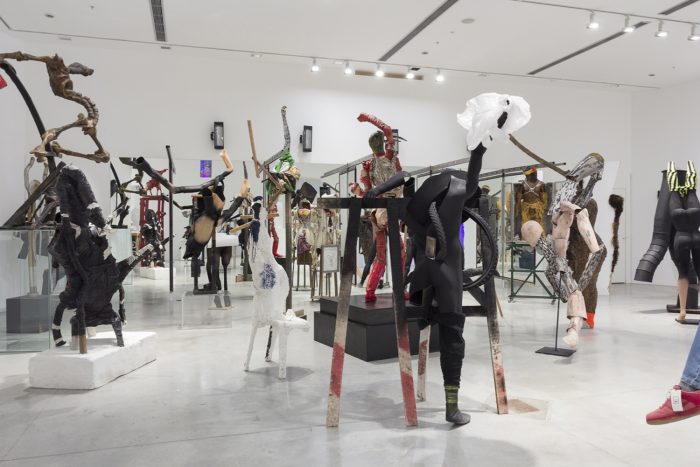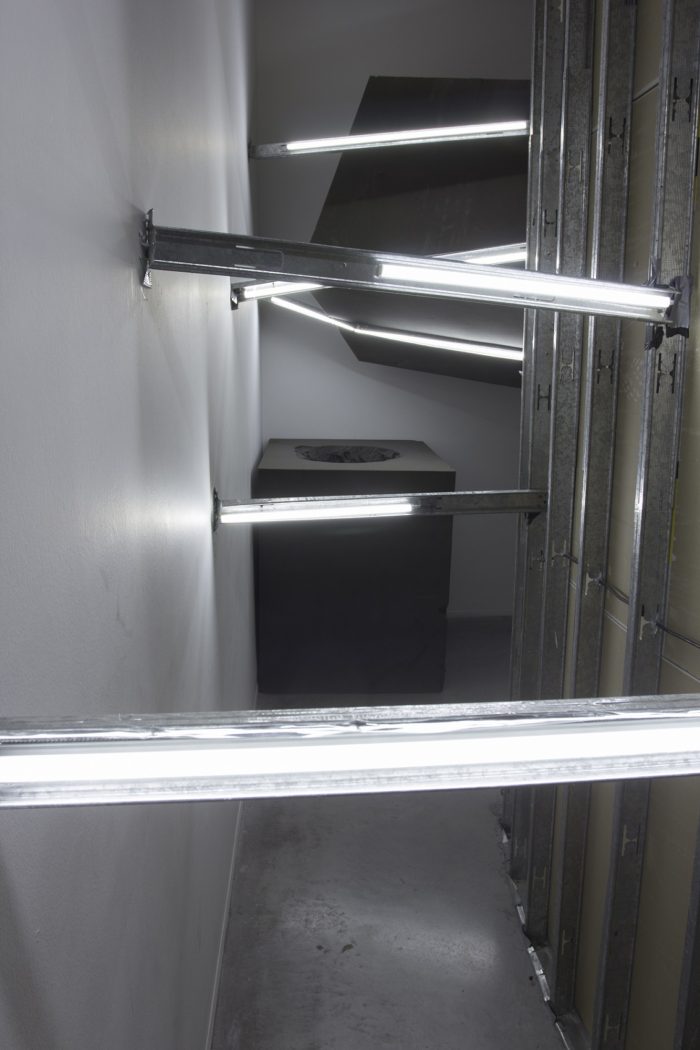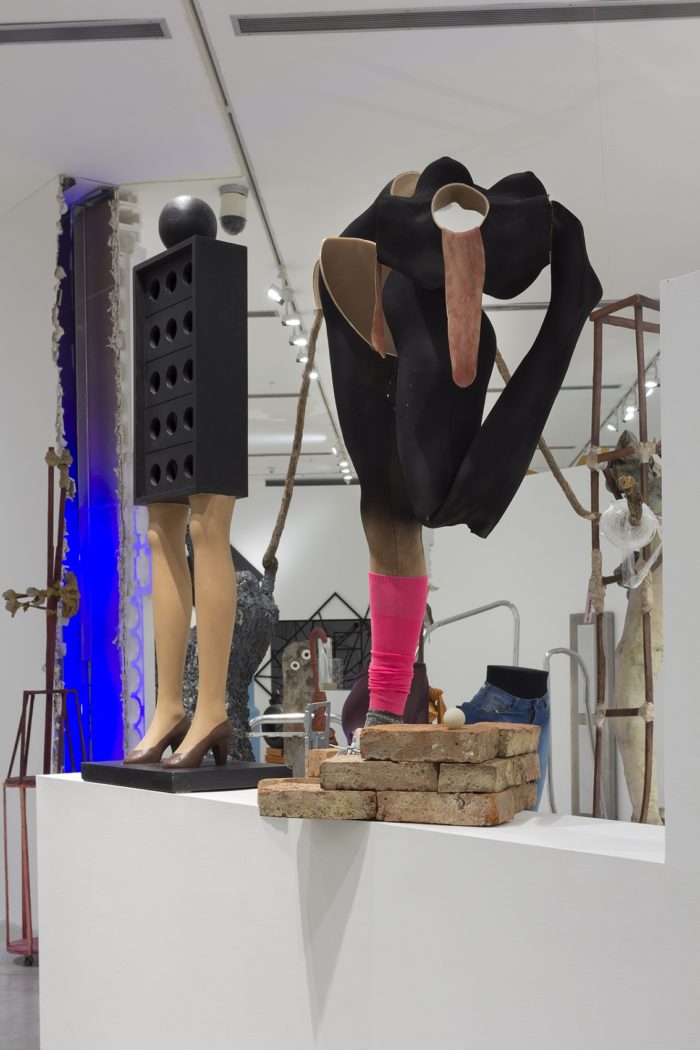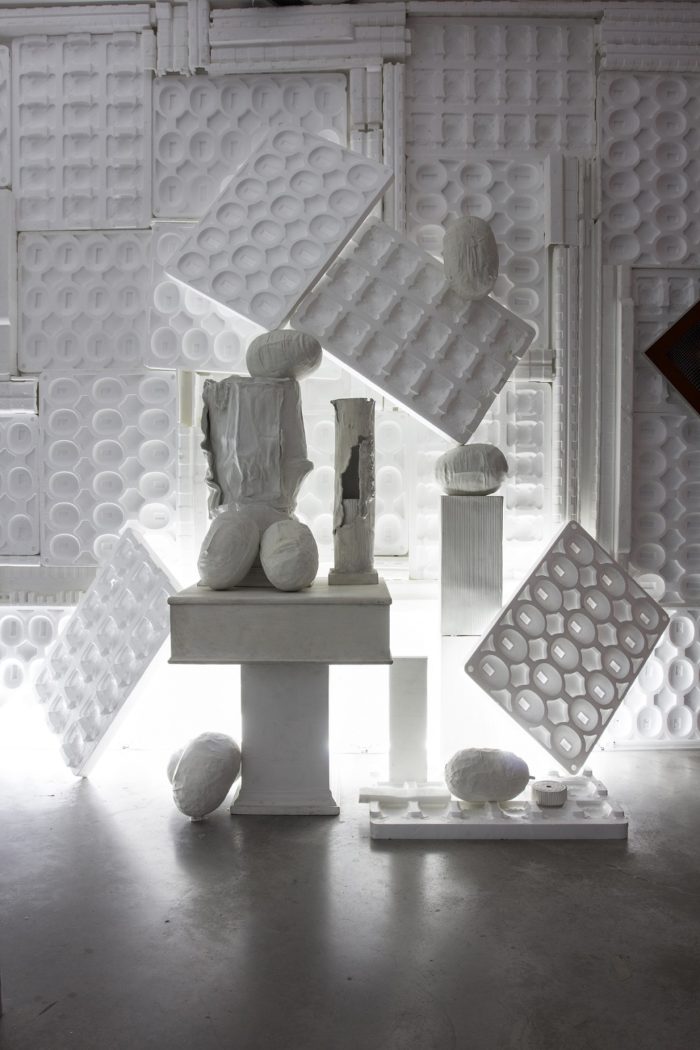
29.06.2017
by Claudio Marcelo Iglesias, Buenos Aires, Argentina
April 22, 2017 – August 6, 2017

In a city that is barely getting over its worst economic crisis, a kid is nosing around for things in the street: trash, discarded electronic equipment, construction materials abandoned in dump trucks. The kid is Diego Bianchi and the city where he’s poking around is Buenos Aires. It’s 2004. It was back then he put together his first major installation, Daños, at Galería Belleza y Felicidad. With zero budget and in a restricted space, Bianchi mounted a tornado made of hundreds of objects he spread across walls, floors and ceilings. Locals who happened by the gallery windows would stop and stare, as if something terrible and inexplicable had happened. It was nothing more than the beachhead of a new language—an immersive installation made of found materials, as part of an artistic scene that in previous years had been much fonder of the reduced-scale art object, salient characteristics of 1990s-era expressions (e.g., Fabio Kacero, Marcelo Pombo, Fernanda Laguna, among others) marked by a sensibility that rejected large-format contemporary art productions in defense of a local, extravagant sensibility.
Thirteen years later, the same kid’s tastes are more expansive and he (almost) doesn’t use trash. In the interim he’s done nearly thirty major shows, including solo exhibitions and projects for biennials at Lyon, Istanbul and Havana. Invited by curator Javier Villa, he now has the Museo de Arte Moderno de Buenos Aires at his disposal and has leveraged its space as well as its collection. The exhibition title, El presente está encantador (The Present Is Enchanting) elicits a contemplation of the Buenos Aires unconscious before you even go in the door. El infierno está encantador esta noche is a well-known song by Patricio Rey y sus Redonditos de Ricota that begins with an imprecation at audiences: ¿Son por acaso ustedes, hoy, un público respetable?—“Are you even a respectable audience today?”

The show is mounted like a tour. It begins through a narrow, protuberant tunnel that leads from a gallery toward the lobby. Bianchi manipulated the partitions from a previous show and created tubes from construction materials to open an intestinal tract that renders the space somewhat unrecognizable, cumbersome, with lights, holes and stairs that appear as you move along. Making your way past steps, curves and doors, your sense of where you are cedes to your sense of touch and a sensation of proximity to a series of potentially menacing surfaces. But the further you get down the path—designed to physically challenge viewers—you start to recognize certain artworks from the museum collection the artist has chosen in collaboration with the exhibition curator. It means Bianchi’s installation includes works from Argentine artists firmly anchored to the Modernist tradition: Norberto Gómez, Alberto Heredia, Gyula Kosice, Margarita Paksa, Rogelio Polesello, Emilio Renart and Ruben Santantonín, among others, sculptors for the most part.
But Bianchi didn’t come up with some nice homage to his guests of honor. Instead, he threw them a harrowing, blow-out of a party. The visit ends in a more open space, something finally like a museum gallery—a white lagoon where artworks by Bianchi and his guests share space—with music and flashing lights that distort the conventional protocol governing a typical exhibition visit. A guard watches everything from a raised platform that could be from a disco. Legs in jeans and high-heeled pumps stick out from a white platform. A tortured body hangs from a wooden structure; innumerable mannequins cut off at the waist make their way through the gallery; there are also disembodied torsos. It’s the amputees’ ball, a carnival of anthropomorphous figures in a state of precarious frenzy. The space looks like the welcoming party of a contemporary Argentine artist, one of the most prominent that emerged in the previous decade, with his references in the local tradition (plus the affinities to Bianchi in a sculptor like Heredia present themselves straight away: in the saga of human body martyrdom; the use of stands and hanging studs; a fondness for rotting foods, etc.) Bianchi’s artworks go well with those of the museum collection even as you’re compelled to ask who indeed is the owner of the house—and who is the guest. Is it Bianchi or the artists that have been living in the museum all these decades?

Is an artwork the opposite of trash?
An ongoing theme in Bianchi’s work is the karma of commodities: the degradation of consumer objects that, once discarded, begin a “second life” as trash. “In every project,” says the artist in a curatorial text for the show, “I try to dig into the particularities of the place where my work will show and practice with some external, unknown and intriguing factor. I’m interested in how long things last in the world and what, of what exists, is chosen to be preserved.” For his 2006 show My Summer Bunker Project at the Luis Adelantado gallery in Miami, Bianchi brought quite a bit of rather raunchy garbage (largely thrown-out food) that he had found in the surrounding area into the gallery. In another show from around the same time he hauled in sea garbage and wastes from ships. But now he’s dealing with a container that’s packed with high-toned throwaways: a museum collection. What kind of trash is this? The artist who subjected his objects to all manner of interventions (burning, chopping, gutting, etc.) now has to struggle with things that cannot be damaged and can only barely be manipulated: artworks.
When an artist does a show with historic treasures, he can leverage as many variables as there are in his own works. Generally speaking, artists don’t try to think about too many things; each knows his own line and explores it in detail. Bianchi’s work is rigorous in its capacities, methods and tones, regardless of how feverish this thirst for discovering new challenges and obstacles may be. His work environment is always the same: the viewer’s perceptible and corporeal space, something he constantly torments and shocks.
In the present show, it is that space that Bianchi manipulates, altering the experience one can have in relation to the artworks. He does not violate their materiality, but rather their projection onto the spectator. He acts within the environment where the works are perceived: on their theatricality. Every parameter is upset, from light to the guard’s position, in an opera buffa whose clowns are masterworks more accustomed to calmer situations. Thus Bianchi equates the museum’s treasures with other resources he previously subjected to intervention (found objects, garbage, etc.) to indicate that in the space of the intervention his true obsession is the viewer’s perceptive space.

An exhibition’s stations of the cross
A supermodel, celebrity or artwork might remark that being on display is serious work. Before he was let loose amid the museum’s treasures like a hungry man on a 3 a.m. refrigerator raid, Bianchi had been exploring substitutes for the found object as a unit of analysis in installations. The main such substitute was the human body. In exhibitions from the early years of the decade, such as Ejercicios espirituales (Buenos Aires, 2010) performers began to appear who interacted with installation objects, suddenly becoming theatrical props. Under the si, his theatre piece with Luis Garay, involved a crowded work setup with actors who were driven to the limits of their capacities, forced to undertake grueling exercises. His new victim would seem to be artworks in museums, presented in exceedingly uncomfortable situations. “I suppose that whatever physically, sensorially and affectively alters and mobilizes viewers’ bodies will give them tools for perceiving,” Bianchi declared in an interview. The goal is to generate “a capricious architecture behind the discomfort,” he says: place everything at the service of insistence, shock and unpleasantness.
Comments
There are no coments available.